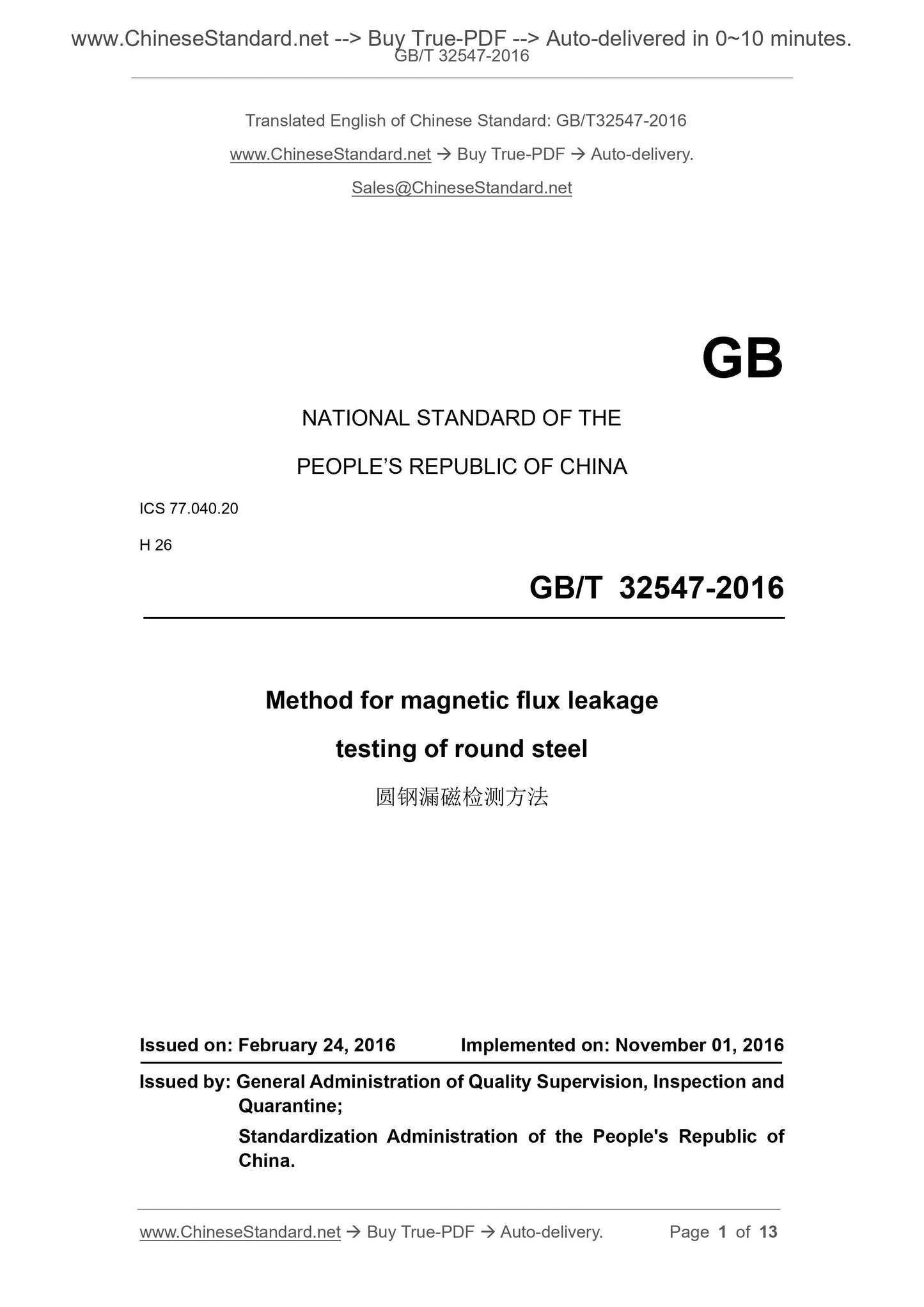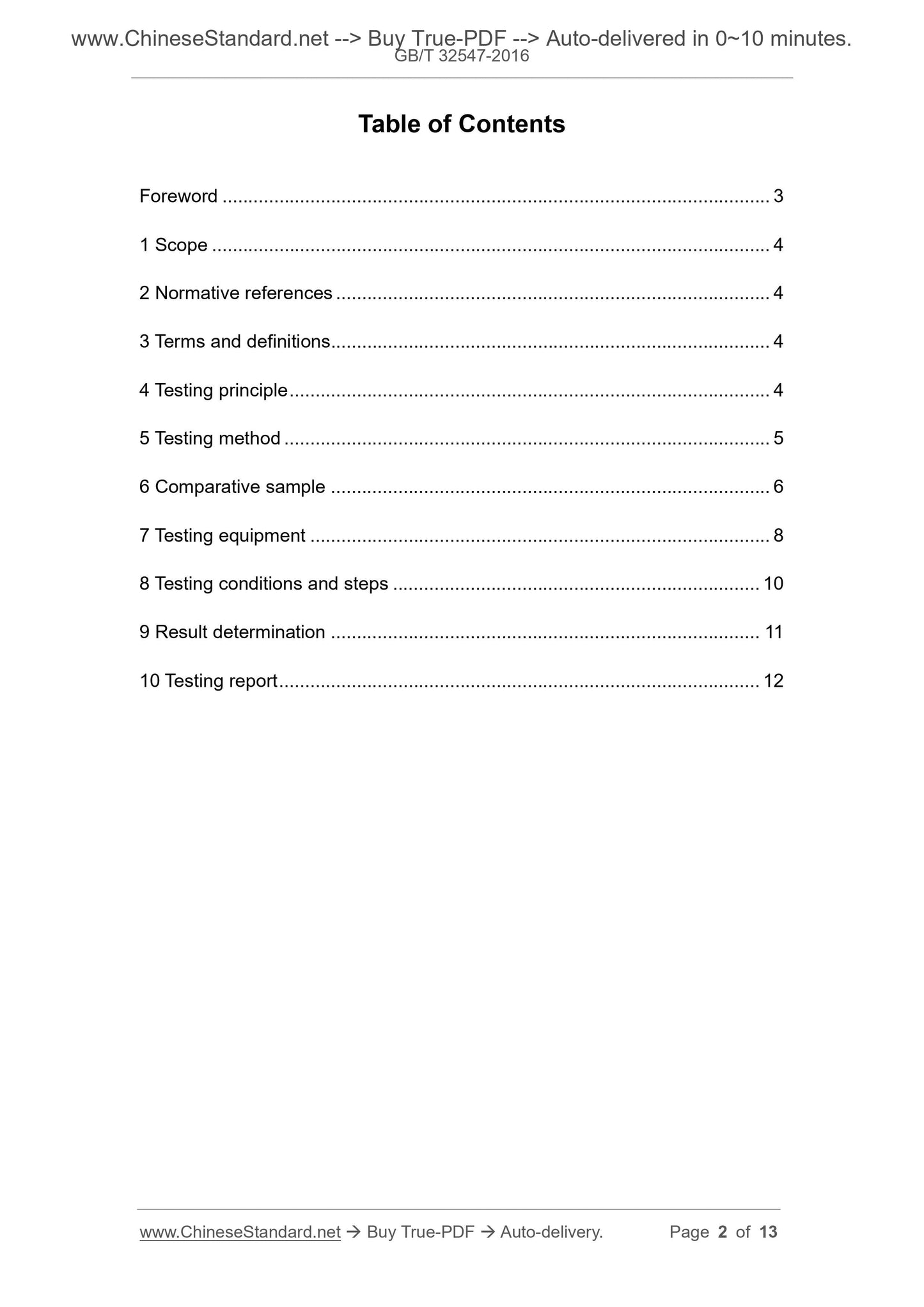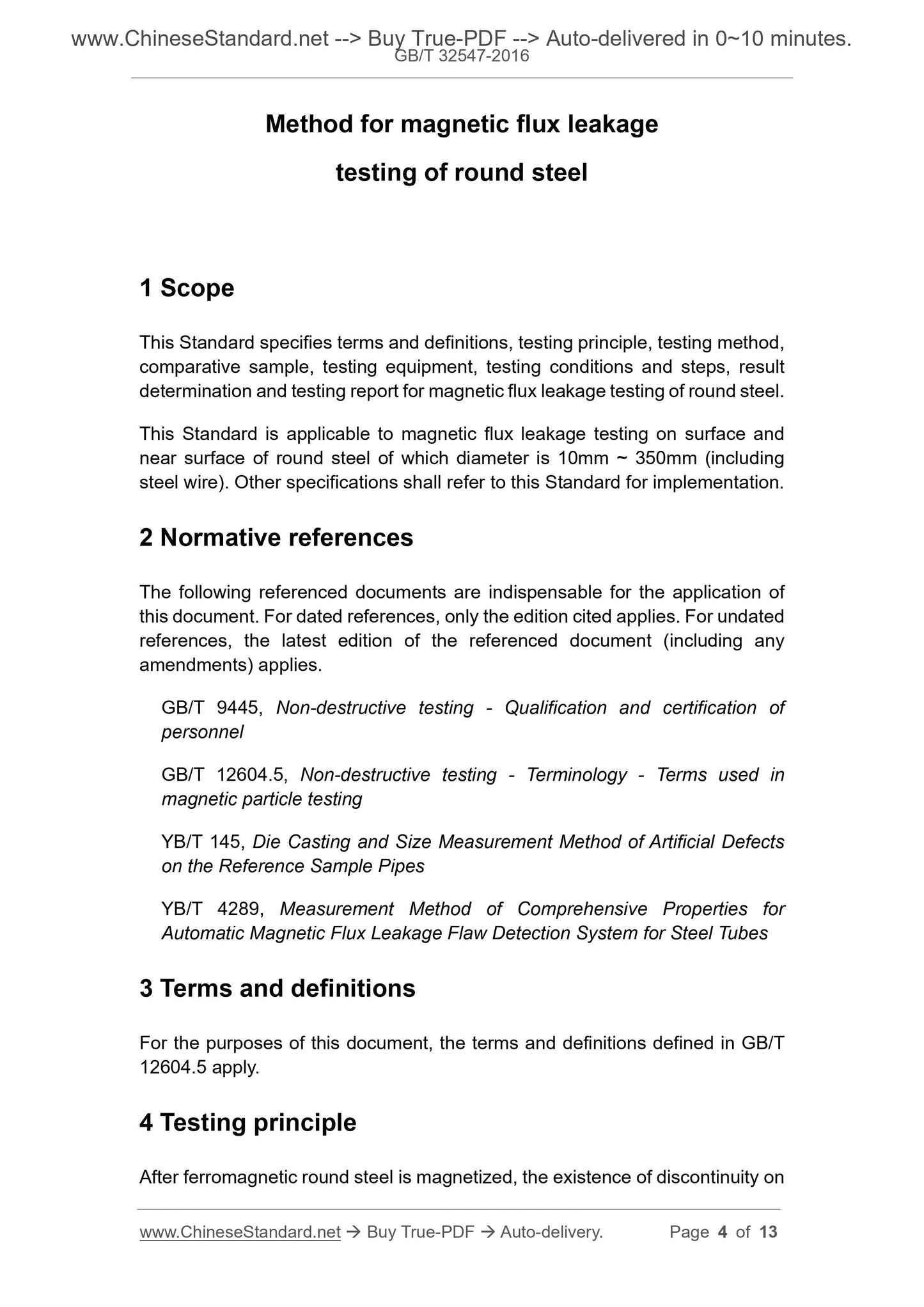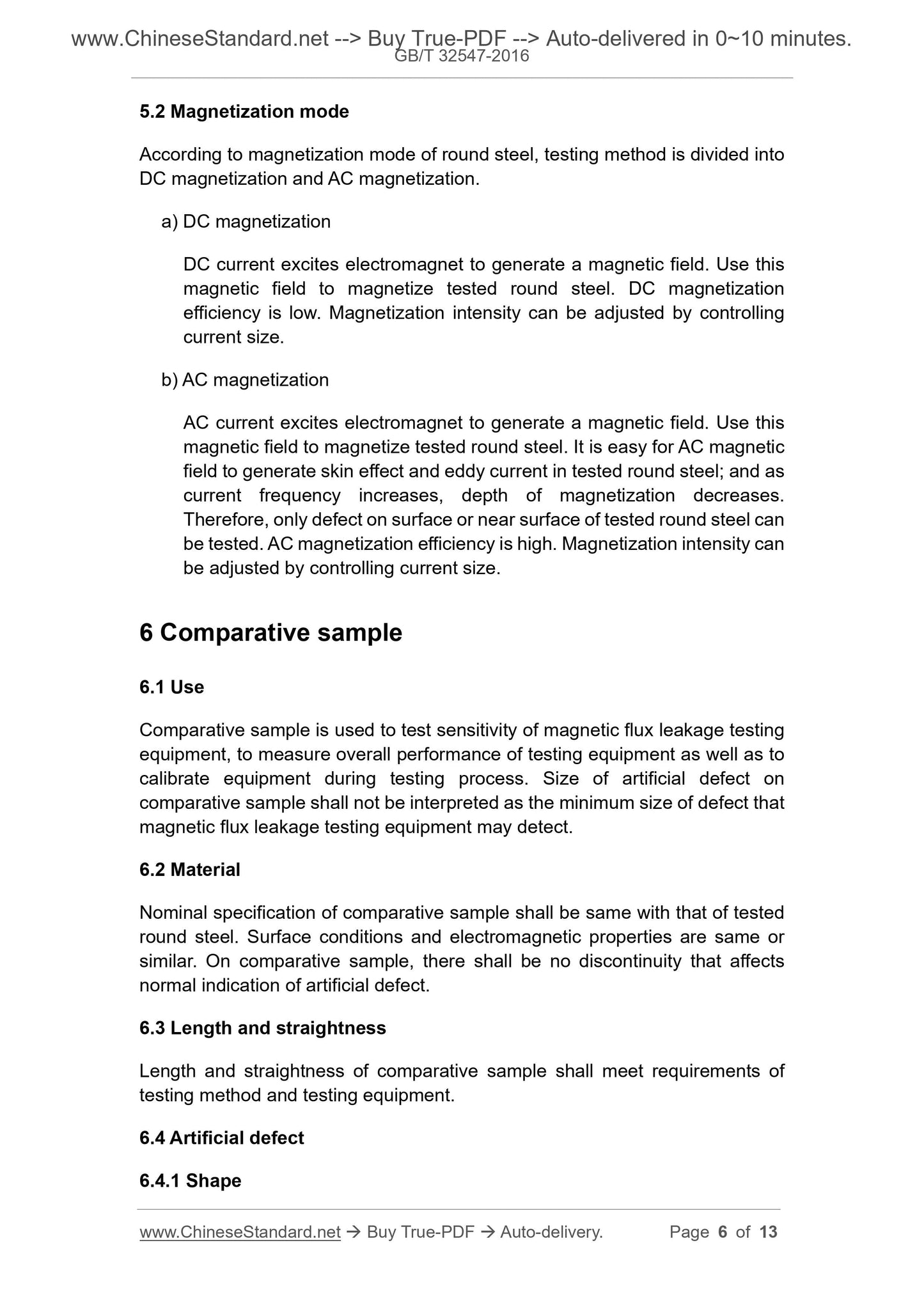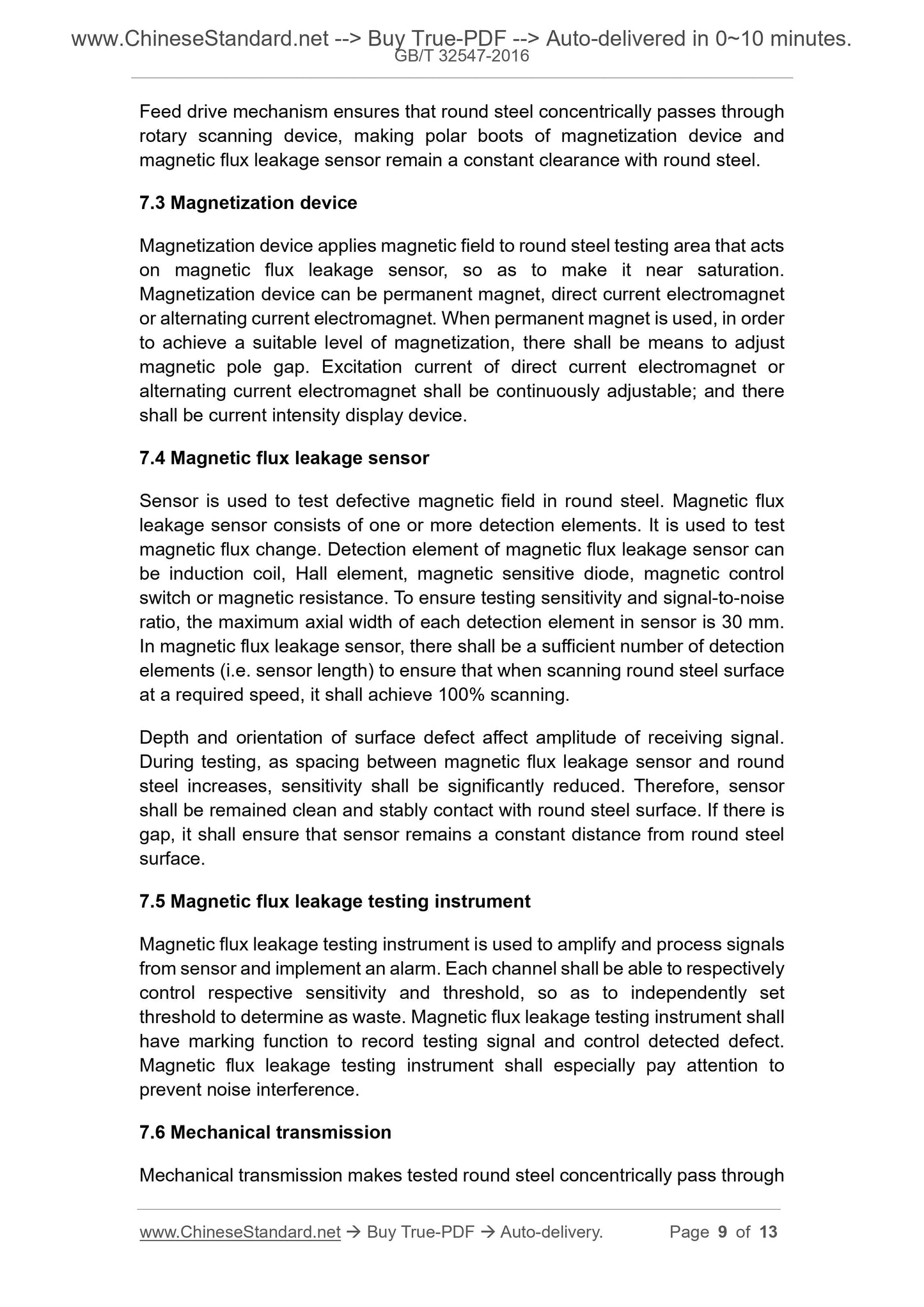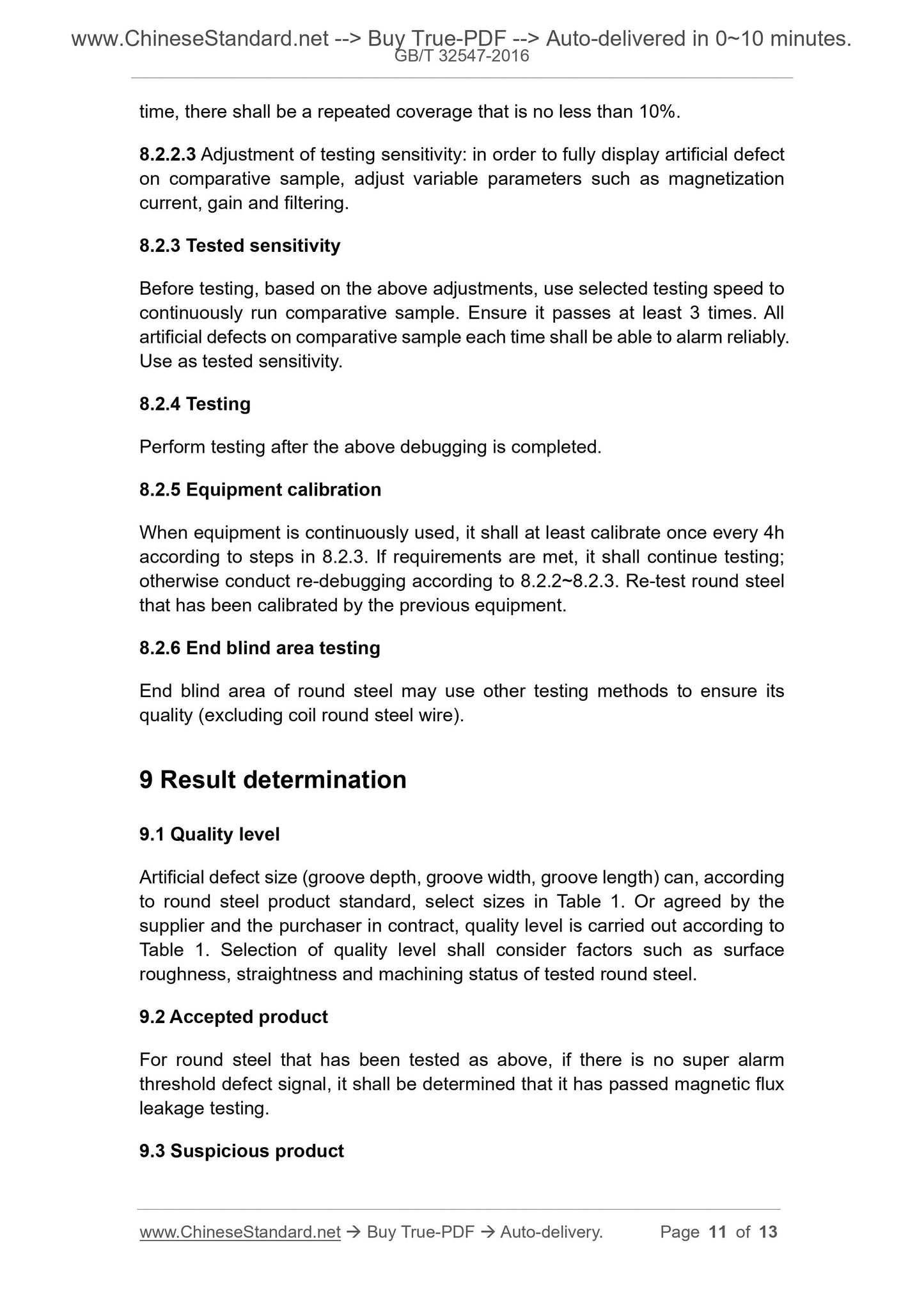1
/
of
6
www.ChineseStandard.us -- Field Test Asia Pte. Ltd.
GB/T 32547-2016 English PDF (GB/T32547-2016)
GB/T 32547-2016 English PDF (GB/T32547-2016)
Regular price
$110.00
Regular price
Sale price
$110.00
Unit price
/
per
Shipping calculated at checkout.
Couldn't load pickup availability
GB/T 32547-2016: Method for magnetic flux leakage testing of round steel
Delivery: 9 seconds. Download (and Email) true-PDF + Invoice.Get Quotation: Click GB/T 32547-2016 (Self-service in 1-minute)
Newer / historical versions: GB/T 32547-2016
Preview True-PDF
Scope
This Standard specifies terms and definitions, testing principle, testing method,comparative sample, testing equipment, testing conditions and steps, result
determination and testing report for magnetic flux leakage testing of round steel.
This Standard is applicable to magnetic flux leakage testing on surface and
near surface of round steel of which diameter is 10mm ~ 350mm (including
steel wire). Other specifications shall refer to this Standard for implementation.
Basic Data
| Standard ID | GB/T 32547-2016 (GB/T32547-2016) |
| Description (Translated English) | Method for magnetic flux leakage testing of round steel |
| Sector / Industry | National Standard (Recommended) |
| Classification of Chinese Standard | H26 |
| Classification of International Standard | 77.040.20 |
| Word Count Estimation | 11,169 |
| Date of Issue | 2016-02-24 |
| Date of Implementation | 2016-11-01 |
| Quoted Standard | GB/T 9445; GB/T 12604.5; YB/T 145; YB/T 4289 |
| Regulation (derived from) | National Standard Announcement No |
| Issuing agency(ies) | General Administration of Quality Supervision, Inspection and Quarantine of the People's Republic of China, Standardization Administration of the People's Republic of China |
| Summary | This standard specifies the terms and definitions, detection principles, testing methods, comparative samples, testing equipment, testing conditions and procedures, results determination and test report of ferromagnetic round steel magnetic flux leakage testing. This standard applies to the diameter of 10 mm ~ 350 mm round steel (including wire) surface and near surface magnetic flux leakage detection. Other specifications can refer to this standard. |
Share
